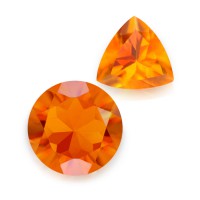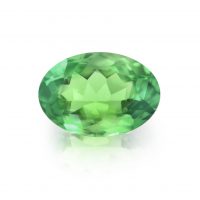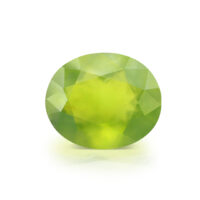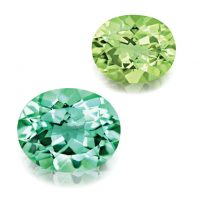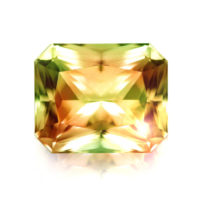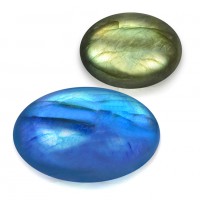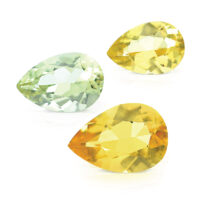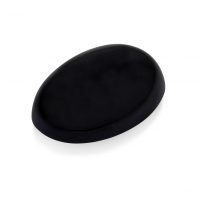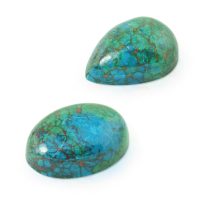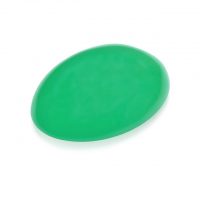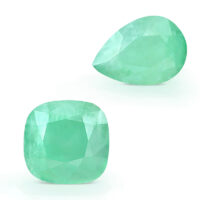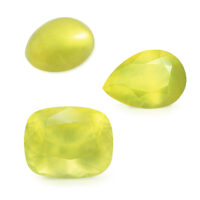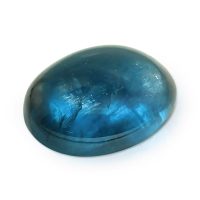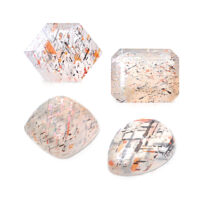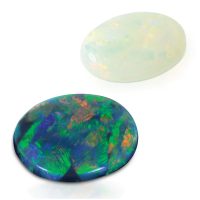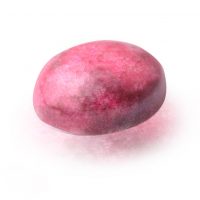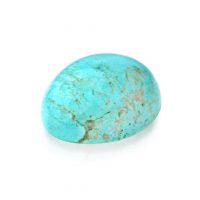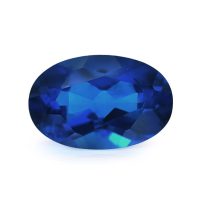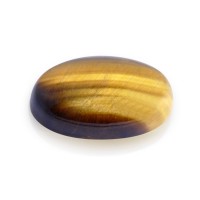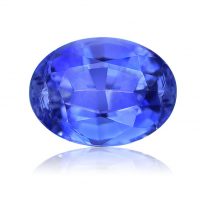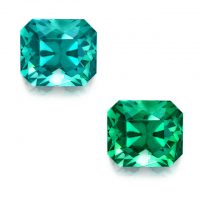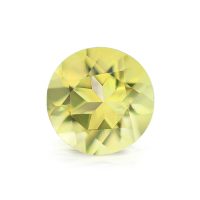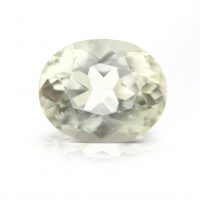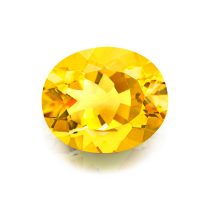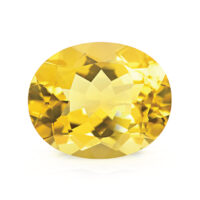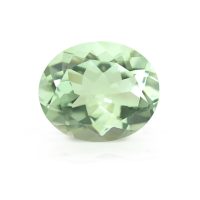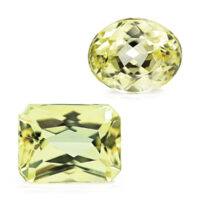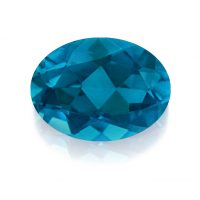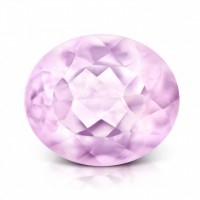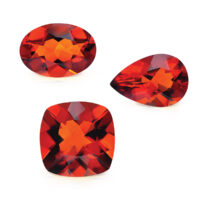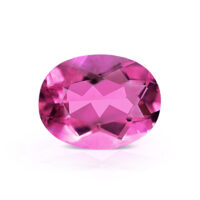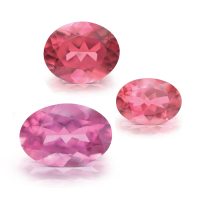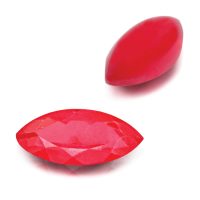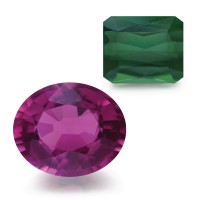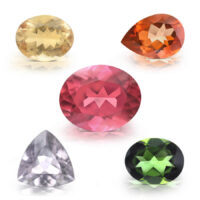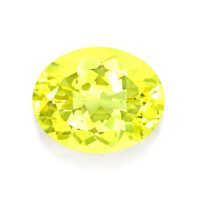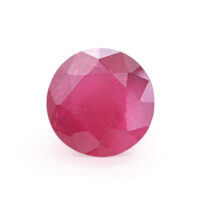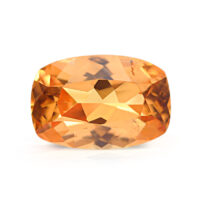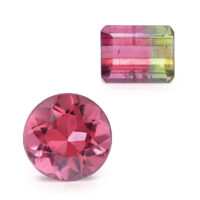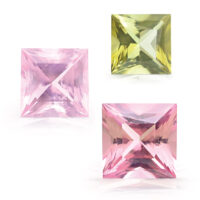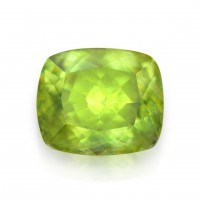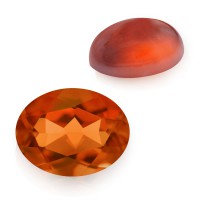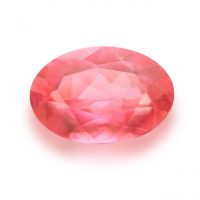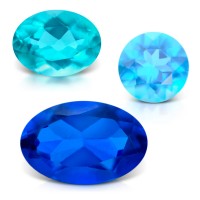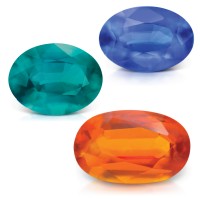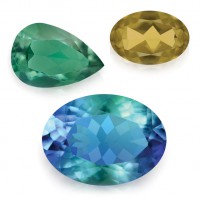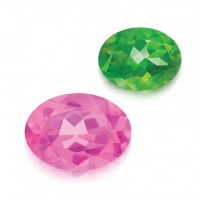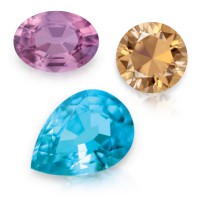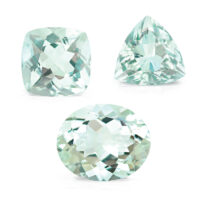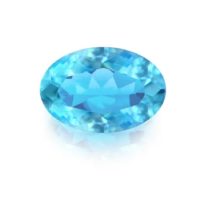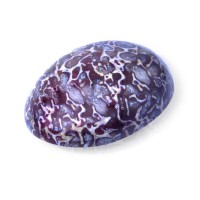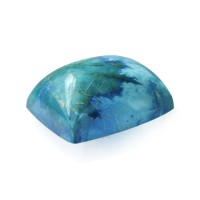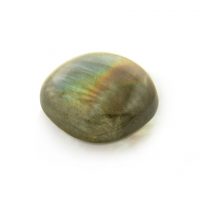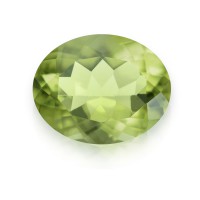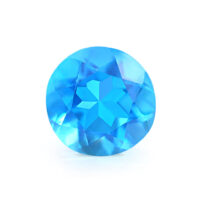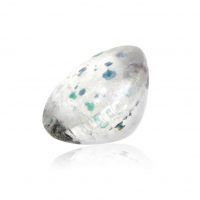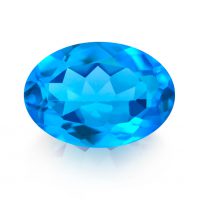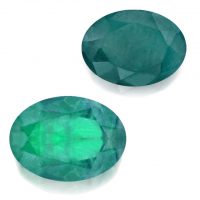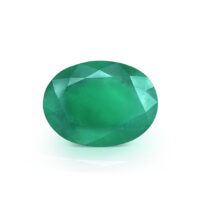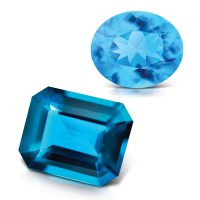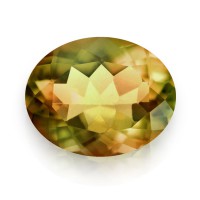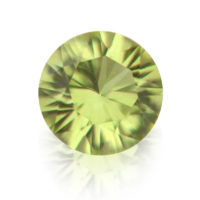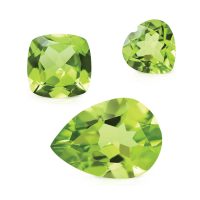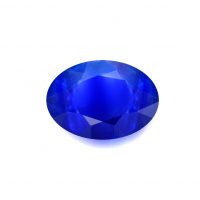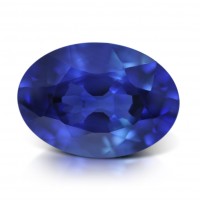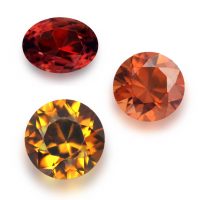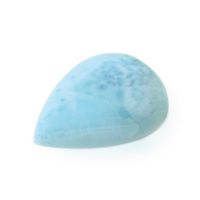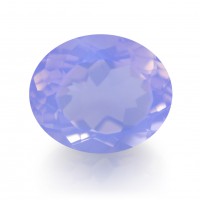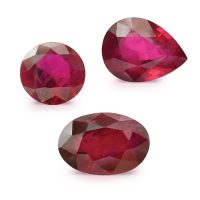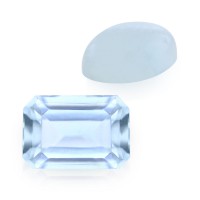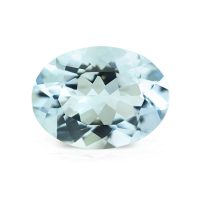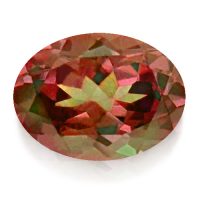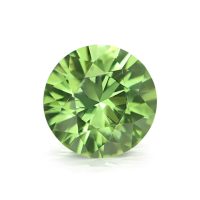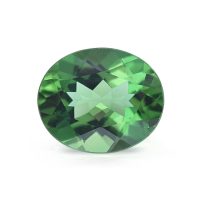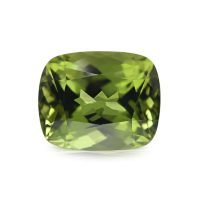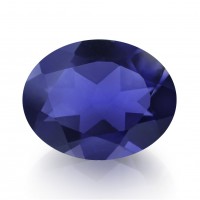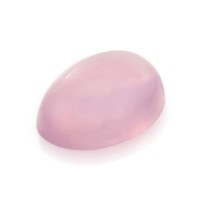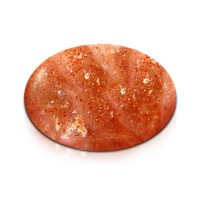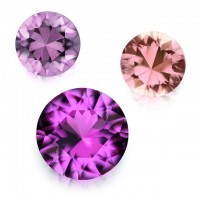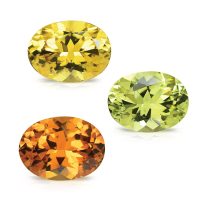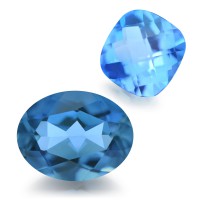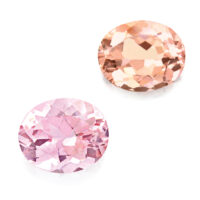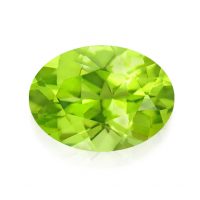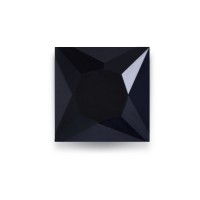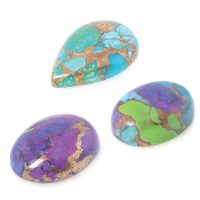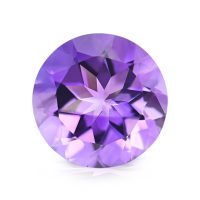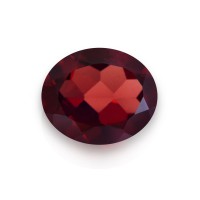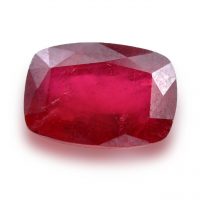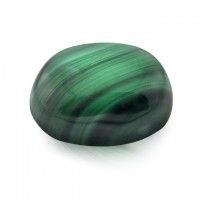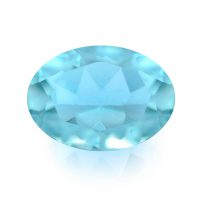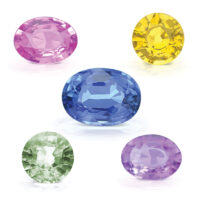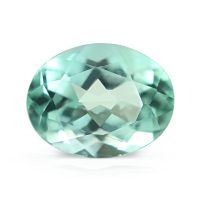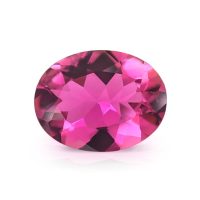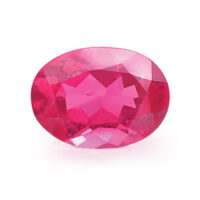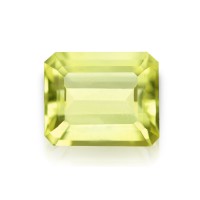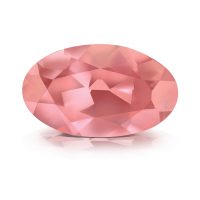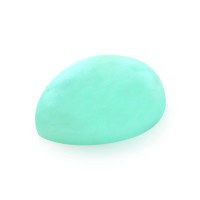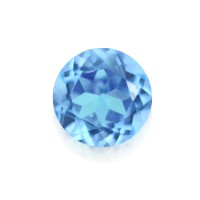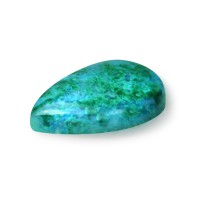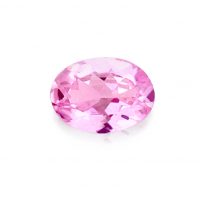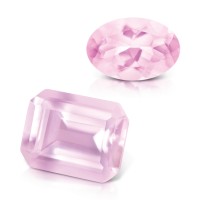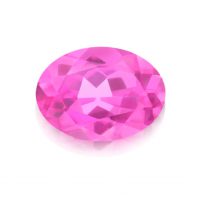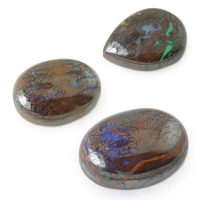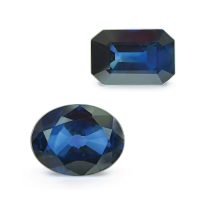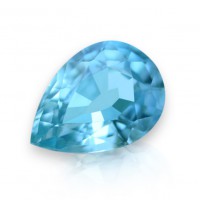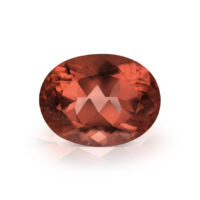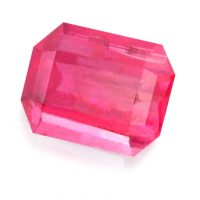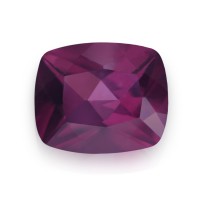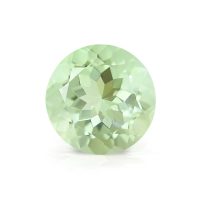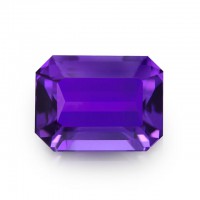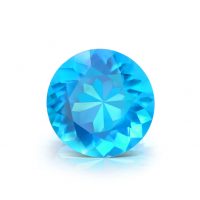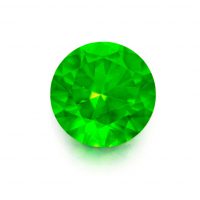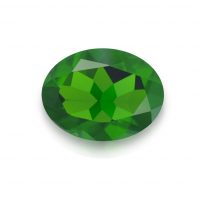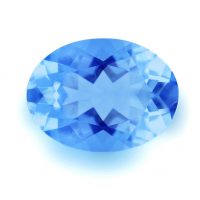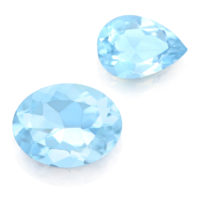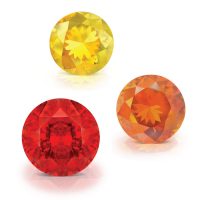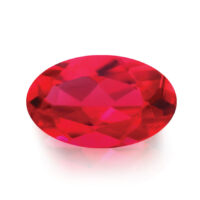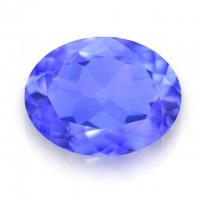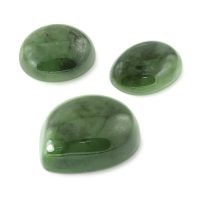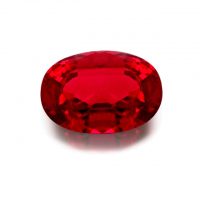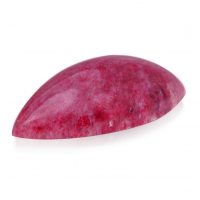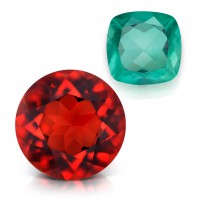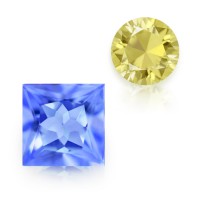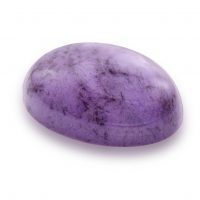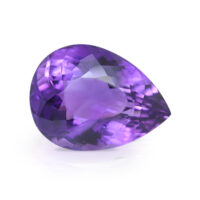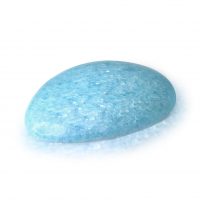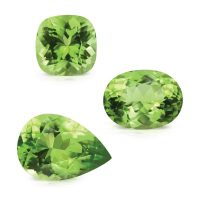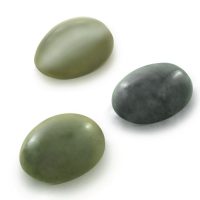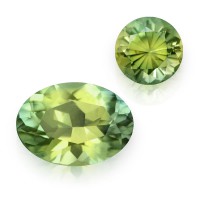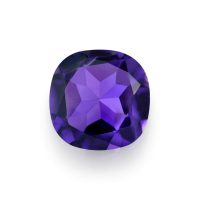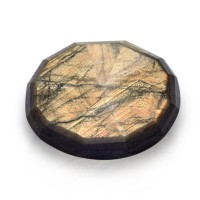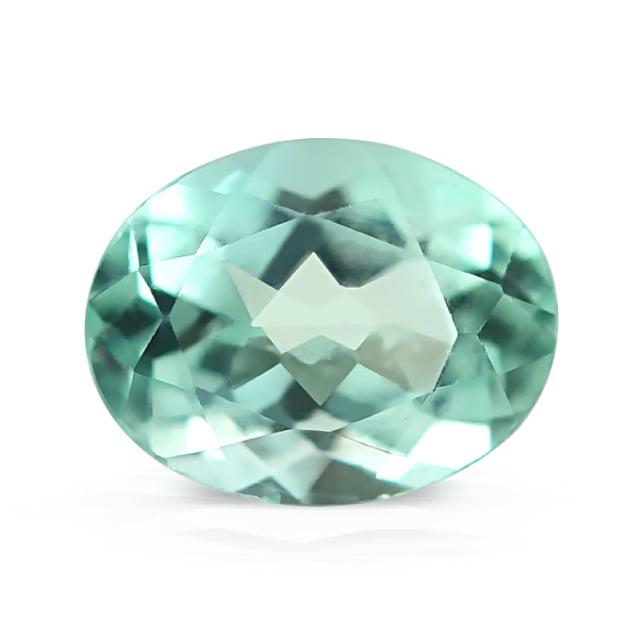

Sister gem to Aquamarine and Emerald, Nigerian Neon Beryl’s an incredibly beautiful, rare natural fusion of Emerald’s neon ‘green-fire’ brightness, and Aquamarine’s brilliant, highly-transparent blues. The perfect birthstone for both March and May, it’s named for its country and coveted color, bright neon-seafoam. This tremendously scarce Beryl was discovered around 40 years ago at Gwantu in Nigeria’s acclaimed Kaduna State. Sporadically available in miniscule quantities, Nigerian Neon Beryl’s magnificent electric hues, combined with excellent brilliance, high-transparency, and ‘everyday’ wear-ability, makes it an exceptional African jewelry gemstone for the true connoisseur.
Hardness 7.5 – 8
Refractive Index 1.562 – 1.602
Relative Density 2.66 – 2.90
Enhancement None
Beauty
Unlike Emeralds, but similar to Aquamarine, Nigerian Neon Beryl has a high-clarity and transparency, making color their most important consideration. Nigerian Neon Beryl displays beautifully unique, neon-seafoam (approximately 30 – 40 percent greenish and 60 – 70 percent bluish) in a highly-desirable medium-light to light saturation (strength of color) and tone (lightness or darkness of color), the marketplace ideal. Their signature color combined with exceptional brilliance and durability, makes them a well-suited and popular choice for jewelry.
With its innate natural beauty and inherent optical properties dependent on optimal cutting, Nigerian Neon Beryl’s expertly faceted in the famous Indian gem city of Jaipur, home to some of the world’s very best Beryl lapidaries. Optimally-faceted using cuts that accentuate color, each crystal’s carefully orientated to maximize colorful brilliance, maintaining an eye-clean clarity (the highest quality clarity grade for colored gemstones, as determined by the world’s leading gemological laboratories), high-polish/luster, as well as a good overall appearance (outline, profile, proportions, and shape).
Given color represents 50 percent of their value, Beryl’s with greater saturation/tone and/or uniquely attractive hues are extremely scarce, collectable and valued. Nigerian Neon Beryl’s striking color is markedly different to Aquamarine’s more typical pastel and deep blues, and’s also much cleaner and intense than many Emeralds, making its rare beauty highly-desirable.
Nigerian Neon Beryl is a member of the Beryl mineral family (from the ancient Greek ‘beryllos’, meaning blue-green stone), commonly known as the ‘mother of gemstones’ because of its highly regarded gem varieties. While ‘pure’ Beryl is colorless, trace amounts of elements are responsible for its wonderful colors. Beryl gemstones include, Aquamarine blues, Emerald greens, Golden Beryl yellows, Goshenite whites (colorless), Heliodor greenish-yellows, Morganite pinks, and Red Beryl reds. May’s birthstone, Emerald is colored by trace amounts of chromium, vanadium and iron, with their relative concentrations causing an extraordinarily beautiful range of pastel to intense deep greens with varying degrees of bluish, brownish, greyish, and yellowish tints. Emerald’s main origins are Afghanistan, Brazil, Colombia, Ethiopia, Pakistan, Russia (Ural Mountains), Zambia, and Zimbabwe. Measured in value, Colombia is the largest producer, followed by Zambia, Brazil, Pakistan, Afghanistan, and Russia. While the Kaduna State does yield Emerald, Nigeria’s not a major source for this gemstone. March’s birthstone, Aquamarines’ range from pastel to intense deep blues, sometimes with splashes of green. Prior to Aquamarines’ modern African discoveries (circa 1830), Brazil and Russia produced the finest quality. While Brazil’s still a major supplier, other sources for fine-quality Aquamarine today include, Madagascar, Mozambique, Nigeria, and Zambia. While Aquamarine and Green Beryl are typically colored by iron, similar to Brazilian and Zambian Emerald, Nigerian Beryl’s color is caused by traces of both iron and vanadium, a rare ‘Midas’ element in gemstones. Sold over the years in varying intensities, as Aquaiba™ Beryl, Emerine, Gwantu Beryl, Mint Beryl, (Neon) Green/Mint/Teal Aquamarine/Beryl, (Nigerian) Aquamarine/Vanadium Aquamarine/Beryl, etc. There’s some controversy among ‘experts’ regarding this gem’s nomenclature… While Nigerian Beryl possesses three phase inclusions practically identical to Colombian Emerald, the absence of significant chromium or vanadium trace elements doesn’t make them green enough to earn the ‘Emerald’ moniker. Although this and their level of saturation traditionally disqualifies them from being classified as Emerald, other experts disagree. For example, in her excellent book, ‘Ruby, Sapphire & Emerald Buying Guide’, Renée Newman states: “there is no agreed-upon criteria in the trade for distinguishing between Green Beryl and Emerald”. She favors keeping it simple for consumers, using ‘Emerald’ to refer “to all Beryl ranging from bluish green to yellowish green regardless of its tone, color purity or coloring agent”. While a sensible approach, there is typically a strict tone description required for Emerald. If it is not medium or darker many do not consider the gem Emerald. While this might seem reasonable for practical purposes, scientifically the variety is defined by its coloring agent. Accordingly, the American Gemological Laboratory New York (AGL) recognizes any Green Beryl colored by chromium and/or vanadium as Emerald regardless of the tone. Almost all Emeralds contain iron as a trace element, though the amount may change from one formation to another. A Beryl variety that owes its green color to iron is typically gemologically named Green, Mint or Mint-Green Beryl.
Rarity
Very attractive, bright, electric, neon hues are an incredibly rare Beryl color, and a key value determinant in gems where colors’ most critical. Usually only colored by trace amounts of iron, Green Beryl’s predominately sourced from Catugi Três Barras in the Brazilian state of Minas Gerais (‘General Mines’ in English), the Jos Plateau in Nigeria’s Plateau State (discovered in the mid-80s), and from Gwantu in Nigeria’s Kaduna State (also first unearthed in the 80s, with new albeit limited discoveries reported in April 2011, and sporadically since then, with late 2018, early 2019 notable). Brazilian Green Beryl’s usually color enhanced, keeping Nigeria the world’s premier source.
Gwantu Beryl is typically found in vugs (a small cavity inside a rock) within pegmatites (coarsely crystalline igneous rock), and is often found in association with its sister gems Aquamarine and Emerald, and Tourmaline, which can also come in similar colors. Gwantu was once a prolific producer of fine-quality Nigerian Neon Beryl, but it’s now challenging to obtain. Only occasionally available from historically mined, vaulted collections, or from limited, sporadic new pockets, ours is the result of chance recent mining (2023), with facet-grade of a neon hue extremely limited. With only scant quantities occasionally available, miners’ asking prices have recently doubled, as German lapidaries are paying premiums due to increased European demand.
Cutting yield was 18 percent, only slightly lower than usual, noting the typical return on a gem mineral is 20 – 35 percent. Nigerian Neon Beryl is also one of the few gemstones that are totally natural and unenhanced, accentuating desirability, rarity, and value. This is extremely significant considering most Aquamarine is heated to improve color, and at least 99 percent of all cut Emeralds are sold with some sort of clarity enhancement.
Durability & Care
Nigerian Neon Beryl (Mohs’ Hardness: 7.5 – 8) is an excellent choice for everyday jewelry. Always store Nigerian Neon Beryl carefully to avoid scuffs and scratches. Clean with gentle soap and lukewarm water, scrubbing behind the gem with a very soft toothbrush as necessary. After cleaning, pat dry with a soft towel or chamois cloth.
Map Location
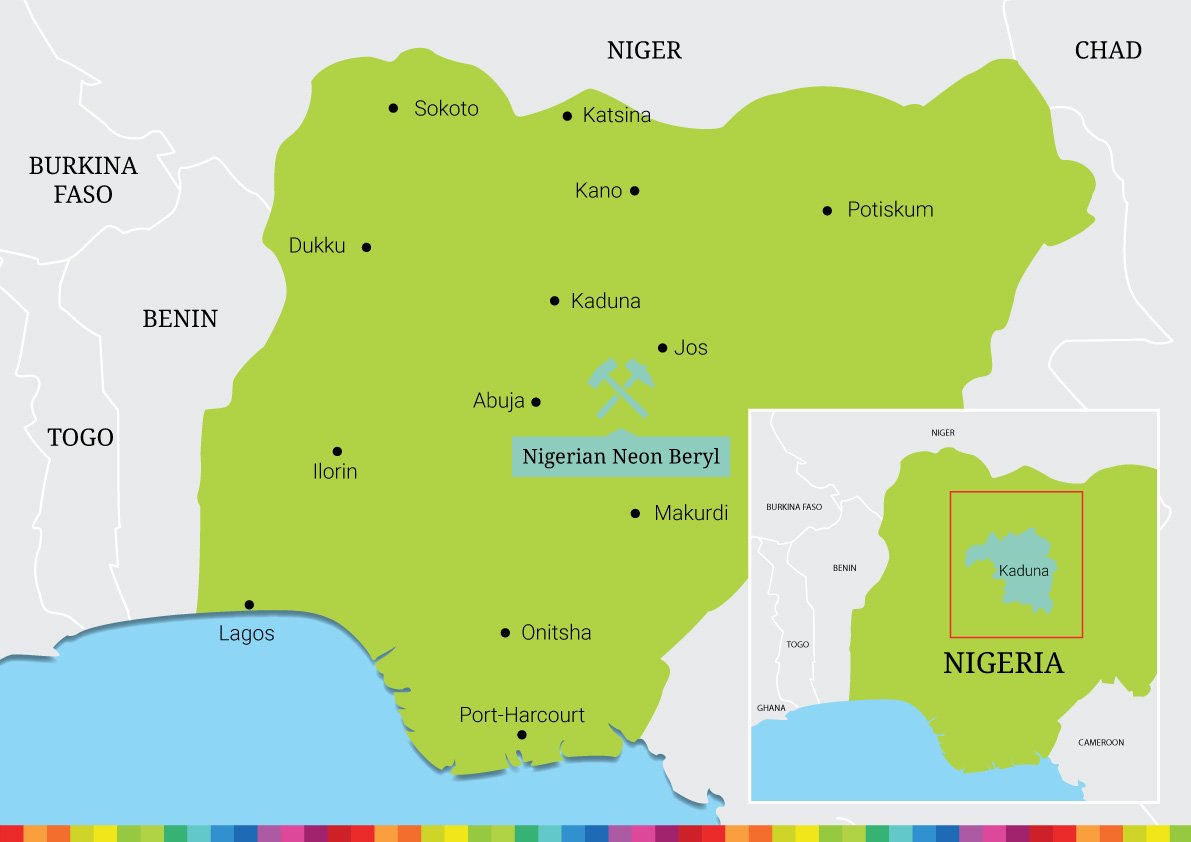
Click map to enlarge
